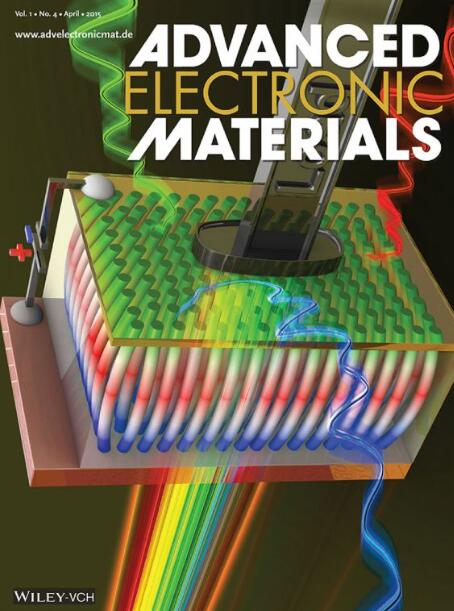Charge Injection and Transport in an Isoindigo-Based Polymer Transistor
IF 5.3
2区 材料科学
Q2 MATERIALS SCIENCE, MULTIDISCIPLINARY
引用次数: 0
Abstract
Polymer semiconductors hold great potential as active materials in (opto)electronic, thermoelectric, and biomedical devices. Their charge transport performance has seen tremendous progress, with mobilities exceeding 1 cm2 V−1 s−1 for a variety of donor-acceptor copolymers. Nevertheless, charge injection at the metal/polymer interface is still rather ineffective and poorly understood. In a field-effect transistor, this process is manifested by the contact resistance (Rc) which, for polymers, is several orders of magnitude higher than for their inorganic counterparts. Therefore, an in-depth investigation of the charge injection in metal/donor-acceptor polymer systems is sought-after. Here, the low-temperature dependent Rc and charge transport of a model isoindigo donor-acceptor copolymer-based transistor are studied. The metal/polymer interface is tuned by functionalizing the electrodes with different thiolated self-assembled monolayers (SAMs). Rc in devices with SAM-functionalized electrodes is generally lower and exhibited a weak temperature dependence. Counterintuitively, electrodes functionalized with SAMs expected to lead to an apparently unfavorable energy level alignment displayed the lowest Rc. The Fermi level is found to be pinned at all the encompassed interfaces. An energy-level alignment modeling is employed to understand this behavior. The findings reveal that simply looking at the energy levels alignment of metal/polymer interface does not necessarily lead to reduced Rc.

异靛蓝基聚合物晶体管中的电荷注入和传输
本文章由计算机程序翻译,如有差异,请以英文原文为准。
求助全文
约1分钟内获得全文
求助全文
来源期刊

Advanced Electronic Materials
NANOSCIENCE & NANOTECHNOLOGYMATERIALS SCIE-MATERIALS SCIENCE, MULTIDISCIPLINARY
CiteScore
11.00
自引率
3.20%
发文量
433
期刊介绍:
Advanced Electronic Materials is an interdisciplinary forum for peer-reviewed, high-quality, high-impact research in the fields of materials science, physics, and engineering of electronic and magnetic materials. It includes research on physics and physical properties of electronic and magnetic materials, spintronics, electronics, device physics and engineering, micro- and nano-electromechanical systems, and organic electronics, in addition to fundamental research.
 求助内容:
求助内容: 应助结果提醒方式:
应助结果提醒方式:


